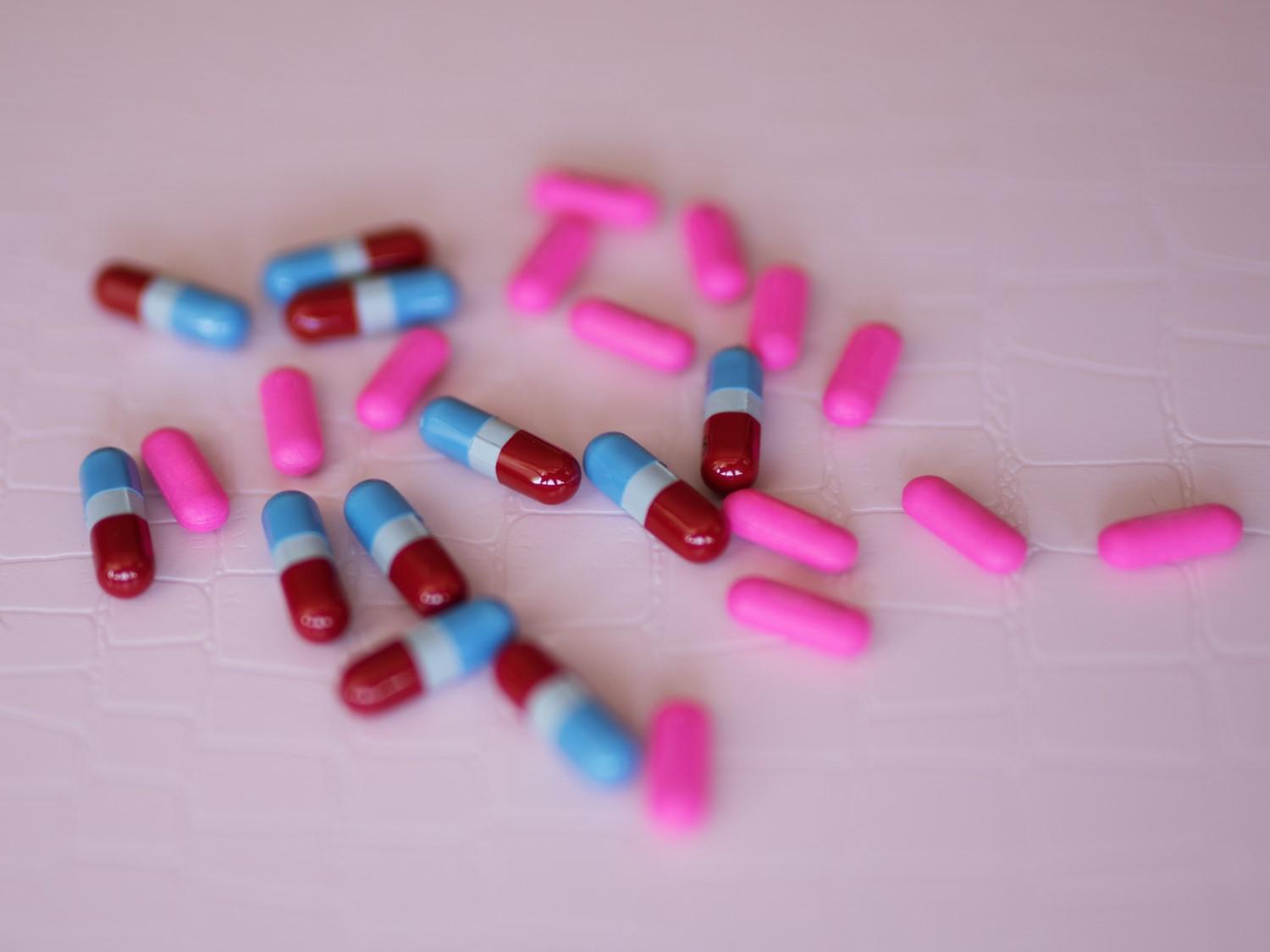Extended-spectrum beta-lactamases
ESBLs
Peer reviewed by Dr Hayley Willacy, FRCGP Last updated by Dr Colin Tidy, MRCGPLast updated 16 Mar 2023
Meets Patient’s editorial guidelines
- DownloadDownload
- Share
- Language
- Discussion
In this series:AntibioticsGerms
Extended-spectrum beta-lactamases (ESBLs) have so far only been reported in certain bacteria called Gram-negative bacterial infections.
In this article:
Continue reading below
What are extended-spectrum beta-lactamases?
Extended-spectrum beta-lactamases (ESBLs) are chemicals (enzymes) that can be made by some germs (bacteria). The ESBLs can make some antibiotics ineffective. This makes the infection caused by the bacteria much harder to treat.
ESBL-producing bacteria are just one example of a rapidly growing problem of antibiotics being ineffective in treating certain infections.
There are still a few antibiotics that can be used to treat infections caused by ESBL-producing bacteria. However, current antibiotics will continue to become less effective unless used only when really needed. It is also very important to use antibiotics in the correct dose for the full recommended course of treatment.
Although ESBLs can be made by different bacteria, they are most often made by E. coli (more correctly called Escherichia coli). Therefore, the remainder of this leaflet refers to E. coli. Other bacteria that can also make ESBLs include the species called Klebsiella.
What is E. coli?
E. coli (more correctly called Escherichia coli) is a germ (bacterium). There are many subtypes of E. coli. Many of the strains of E. coli are usually harmless and live in the intestines (gut) of healthy people. However, some strains are a cause of common infections such as urine infections and gut infections (gastroenteritis).
Some factors may increase the risk of E. coli infection, such as poor water supplies, people with animals and petting zoos.
Continue reading below
What causes E. coli?
E. coli infection can be caused by ingesting (taking in by mouth) certain strains of E. coli bacteria. The bacteria travel down your digestive system, and release a destructive toxin, which damages the lining of your small intestine. The E. coli infection causes your symptoms.
What infections and diseases can be caused by E. coli?
The following conditions may be caused by E. coli infections:
Urinary tract infections (UTIs)
For example, cystitis, kidney infections (which can lead to kidney failure) and other 'urine infections'. These are the most common infections caused by E. coli. About 9 in 10 UTIs are caused by strains of E.coli. Many of the strains are those which live harmlessly in the gut but can cause a UTI if they get into the bladder or other parts of the urinary tract.
Infection of the gut (gastroenteritis)
This is commonly due to various strains which do not normally live in the gut. Gastroenteritis can cause symptoms of runny stools (diarrhoea), being sick (vomiting), high temperature (fever) and tummy (abdominal) pain. The source of the infecting strains is often from contaminated food ('food poisoning') or from other people who have the infection.
Traveller's diarrhoea is often caused by a strain of E. coli. The E. coli strains that cause food poisoning and other tummy infections tend not to be the strains that produce ESBLs - it is more often those which cause urinary tract infections.
Intra-abdominal infections
These are infections that occur inside the abdomen, often when a part of the gut is damaged or punctured (perforated). This allows the normally harmless E. coli germs (bacteria) that live in the gut to get into the abdomen and cause infection. For example, the following can occur after a burst appendix or following a stab wound to the abdomen:
Inflammation of the thin layer of tissue lining the abdomen (the peritoneum). This is called peritonitis.
An abdominal collection of pus (an abscess).
Other infections
Other infections that are sometimes caused by strains of E. coli include:
Infected bones.
Infected joints.
Skin and soft tissue infections (especially in people who have diabetes).
So, in fact, practically any area of the body can be infected with E. coli, although some areas are only rarely infected.
Other diseases
Other diseases associated with E. coli include haemolytic uraemic syndrome (HUS) and thrombotic thrombocytopenic purpura (TTP). These are rare but serious diseases that occur as a result of a poison (toxin) that some strains of E. coli make. The most important toxin-releasing strain is called 'vero cytotoxin-producing Escherichia coli O157'. This is sometimes called VTEC O157 or E. coli O157. See the separate leaflet called E. Coli and VTEC O157 for more details.
Continue reading below
What are ESBL-producing E. coli?
Some strains of E. coli bacteria have started to produce small proteins (enzymes) called extended-spectrum beta-lactamases (ESBLs). These enzymes are significant because, when they are produced by the germs (bacteria), they can make the bacteria resistant to certain commonly used antibiotic medicines. This means that the bacteria can continue to multiply, causing more severe infection and becoming more difficult to treat.
See the separate leaflet called Antibiotics for more information about antibiotics in general.
Who is more at risk of infection with ESBL-producing E. coli?
Most infections caused by ESBL-producing E. coli have occurred in people with other medical conditions who are already very sick, and also in elderly people. People who have been taking antibiotics for other reasons or who have recently been in hospital are also at higher risk.
Can ESBL-producing E. coli be treated?
There are only a few antibiotics that can be used to treat infections caused by ESBL-producing E. coli. Most ESBL-producing E. coli are resistant to many commonly used antibiotic medicines such as some cephalosporins and penicillins. The antibiotics that may be effective include nitrofurantoin and fosfomycin.
How can ESBL-producing E. coli infection be prevented?
Resistance of germs (bacteria) to antibiotics is becoming a very big problem. ESBL-producing E. coli is just one example of bacteria becoming resistant to antibiotics. It is essential that antibiotics are only used when necessary and, when they are needed, the full dose and full course of the antibiotic must be taken. This will help to reduce the number of bacteria that are becoming resistant to antibiotics.
Preventing the spread of infection
Many infections caused by ESBL-producing bacteria (E. coli) are not spread from person to person, such as UTIs. However, if the bacteria cause an infection in your gut (gastroenteritis) then it is essential to take the following steps to prevent the spread of infection to others:
Wash your hands thoroughly after going to the toilet. Ideally, use liquid soap in warm running water but any soap is better than none. Dry properly after washing.
Don't share towels and flannels.
Don't prepare or serve food for others as this poses a higher risk of eating contaminated food.
Regularly clean the toilets that you use, with disinfectant. Wipe the flush handle, toilet seat, bathroom taps, surfaces and door handles with hot water and detergent at least once a day. Keep a cloth just for cleaning the toilet (or use a disposable one each time).
Stay off work, college, etc, until at least 48 hours after the last episode of diarrhoea or being sick (vomiting).
What does it mean for me?
In summary, if you develop an infection with ESBL-producing E. coli:
Your infection can still be treated effectively. You may need a different antibiotic to the commonly used ones.
If you have been given antibiotics for a urine infection and you don't seem to be getting any better, contact your doctor.
You are unlikely to pass your infection on to others, other than if you have an illness with sickness and diarrhoea. People in hospital are more vulnerable to infection, however, so if you develop this infection in hospital, you may be isolated from other patients.
If you have been treated for an ESBL-producing E. coli infection in the past, and you develop similar symptoms, let your doctor know you have had an ESBL infection before.
We can all help reduce antibiotic-resistant germs evolving by using antibiotics appropriately. Take them only when your doctor advises they are necessary, and in accordance with the instructions you are given.
Patient picks for Medicines for infections

Treatment and medication
Head lice treatment and prevention
Treatment is needed only if you see one or more live lice. Empty eggshells (nits) do not always mean that you are infested with lice.
by Dr Colin Tidy, MRCGP

Treatment and medication
Antibiotics
Antibiotics are medicines that treat bacterial infections, but they don’t work against viruses like colds or flu. Using the right antibiotic correctly and completing the full course helps ensure recovery and prevent resistance. This leaflet explains how antibiotics work, when they are prescribed, the types available, how to take them, and possible risks.
by Dr Philippa Vincent, MRCGP
Further reading and references
- Curello J, MacDougall C; Beyond Susceptible and Resistant, Part II: Treatment of Infections Due to Gram-Negative Organisms Producing Extended-Spectrum beta-Lactamases. J Pediatr Pharmacol Ther. 2014 Jul;19(3):156-64. doi: 10.5863/1551-6776-19.3.156.
- Extended-spectrum beta-lactamases (ESBLs); Public Health England
- Bader MS, Loeb M, Brooks AA; An update on the management of urinary tract infections in the era of antimicrobial resistance. Postgrad Med. 2017 Mar;129(2):242-258. doi: 10.1080/00325481.2017.1246055. Epub 2016 Oct 21.
- Shaikh S, Fatima J, Shakil S, et al; Antibiotic resistance and extended spectrum beta-lactamases: Types, epidemiology and treatment. Saudi J Biol Sci. 2015 Jan;22(1):90-101. doi: 10.1016/j.sjbs.2014.08.002. Epub 2014 Aug 17.
- Castanheira M, Simner PJ, Bradford PA; Extended-spectrum beta-lactamases: an update on their characteristics, epidemiology and detection. JAC Antimicrob Resist. 2021 Jul 16;3(3):dlab092. doi: 10.1093/jacamr/dlab092. eCollection 2021 Sep.
Continue reading below
Article history
The information on this page is written and peer reviewed by qualified clinicians.
Next review due: 14 Mar 2028
16 Mar 2023 | Latest version
12 Nov 2015 | Originally published
Authored by:
Dr Colin Tidy, MRCGP

Ask, share, connect.
Browse discussions, ask questions, and share experiences across hundreds of health topics.

Feeling unwell?
Assess your symptoms online for free
Sign up to the Patient newsletter
Your weekly dose of clear, trustworthy health advice - written to help you feel informed, confident and in control.
By subscribing you accept our Privacy Policy. You can unsubscribe at any time. We never sell your data.